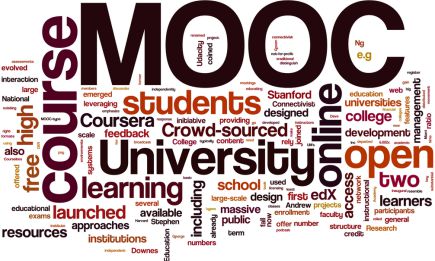OER as catalyst for innovation

In his blog, Dirk van Damme reflects on the latest OECD-report ‘A Catalyst for Innovation’ in which the growth of the OER-movement is being analysed. The most immediate benefit of OER is the open (through open licenses) and free (in most cases at no cost) access to quality teaching and learning materials, often in multimedia formats. OER provide an alternative to costly textbooks and, hence, might lead to significant savings for both schools and learners,” van Damme writes.
An issue of public policy
According to the report, “the OER community has grown considerably over the past ten years and the impact of OER on educational systems has become an issue of public policy.” Three key potentials of OER are highlighted in the OECD-analysis.
First, Open Educational Resources “can harness to new possibility afforded by digital technology to address common educational challenges.” Not only educational challenges can be addressed, social innovation could be achieved. OER could “facilitate changed forms of interaction between teachers, learners and knowledge”.
The last potential of OER can be found in the reproducibility of content. As the OECD writes, “OER have an extended lifecycle beyond their original design and purpose. The process of distribution, adaptation and iteration can improve access to high-quality, contextappropriate educational materials for all.”
Central repository for licensed OER
In order to fully reach its potential, according to the OECD policy support is needed. In the report, several areas for activity are signalled. One is the encouragement of the production of OER. “One way of centralising and focusing efforts on the use and sharing of OER is to provide a central repository for openly licensed educational materials or to support efforts to make existing OER more discoverable.”
A lot of qualitative open content is the first step, but it will also require proper support services. “This leads to a new role for teachers in the learning situation. Furthermore, teachers and instructors require support as they develop new skills and overcome motivational and organisational barriers to sharing or collaborating through OER. These changes should be reflected in teacher training and continual professional development courses. “
The last step necessary will be a policy focus on the framework surrounding quality assurance. “Policy makers can change the framework conditions of formal educational settings by modifying rules, promoting new tools and reassigning the division of labour for the production of high-quality educational resources.” According to the OECD, this means new systems of quality assurance are necessary.
The future of OER?
While governments were hesitant in the adoption of OER in the first year, Dirk van Damme is noticing a shift. “The potential of OER to catalyse change and innovation in education is not yet well understood by many governments. But that is changing, too. A small survey, the results of which appear in the book, found that most governments are now considering various policies to support the production and use of OER .”
This leads Van Damme to a positive conclusion for the future of Open Educational Resources. “In the end, perhaps OER will be one of the most significant and substantive ways that technology will transform teaching and learning.”
Meest Gelezen
Wederom intimidatie van journalisten door universiteit, nu in Delft
‘Burgerschapsonderwijs moet ook verplicht worden in hbo en wo’
Raad van State: laat taaltoets nog niet gelden voor hbo-opleidingen
Vrouwen houden universiteit draaiende, maar krijgen daarvoor geen waardering
Extra geld voor bètafaculteiten is daar nooit terechtgekomen



